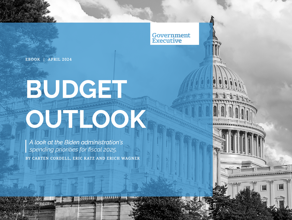Ridge unveils more specific national alert system
The White House Office of Homeland Security on Tuesday announced a new warning system that includes five levels of alert for assessing the threat of possible terrorist attacks.
The color-coded alert system, created by a presidential directive, is designed to help government and law enforcement officials properly gauge threats of possible terrorist attacks on the country and allocate their resources appropriately, according to a White House statement. The warning system, which provides guidance to agencies and the public, is currently in effect at all federal agencies.
The lowest level of alert is green, followed by blue, yellow, orange and red, which means there is a "severe risk of terrorist attacks." The country is currently operating at the middle, or yellow level, which means there is a "significant risk of terrorist attacks." A yellow alert directs government and law enforcement officials to increase surveillance of areas that may be targets of a possible attack and coordinate emergency plans with nearby jurisdictions.
Attorney General John Ashcroft will be responsible for developing and managing the federal alert system, following a 45-day public comment period. The White House is encouraging states and local communities to adopt the system, after President Bush approves the final version.
Since Sept. 11, the government has issued four general warnings about possible terrorist attacks, directing federal and local law enforcement agencies to place themselves on the "highest alert." But government and law enforcement officials, particularly at the state and local levels, complained that general warnings were too vague and a drain on resources.
"We are pleased with the new alert system from a couple of standpoints," said Police Chief Bill Berger, president of the International Association of Chiefs of Police and police chief of North Miami Beach, Fla. "We know that [Homeland Security Director] Tom Ridge worked hard and talked to a lot of people to make this happen." Berger called on the government in November to design a more formal warning system, similar to the military's system of threat assessment, which also operates on five levels of alert.
The new federal alert system is similar to the state of Florida's flag system for hurricane alerts, Berger said. Like the hurricane warning system, the homeland security threat assessment is easy-to-understand and user-friendly, he said.
Eventually states and local communities should operate on different levels within the homeland security alert system, making warnings specific to geographic regions, Berger said. "For example, under that scenario, Florida could be operating at the yellow level, while another part of the country is classified as green."
States and local communities will most likely adopt the federal government's system of alert, Berger said. Information-sharing "up and down" the federal, state and local chains is the overall objective in developing an effective warning system, he said.
Send written comments on the homeland security system of alert to:
Homeland Security Advisory System
Room 7222
935 Pennsylvania Ave., N.W.
Washington, D.C. 20535
E-mail comments to: HSAScomments@fbi.gov.



